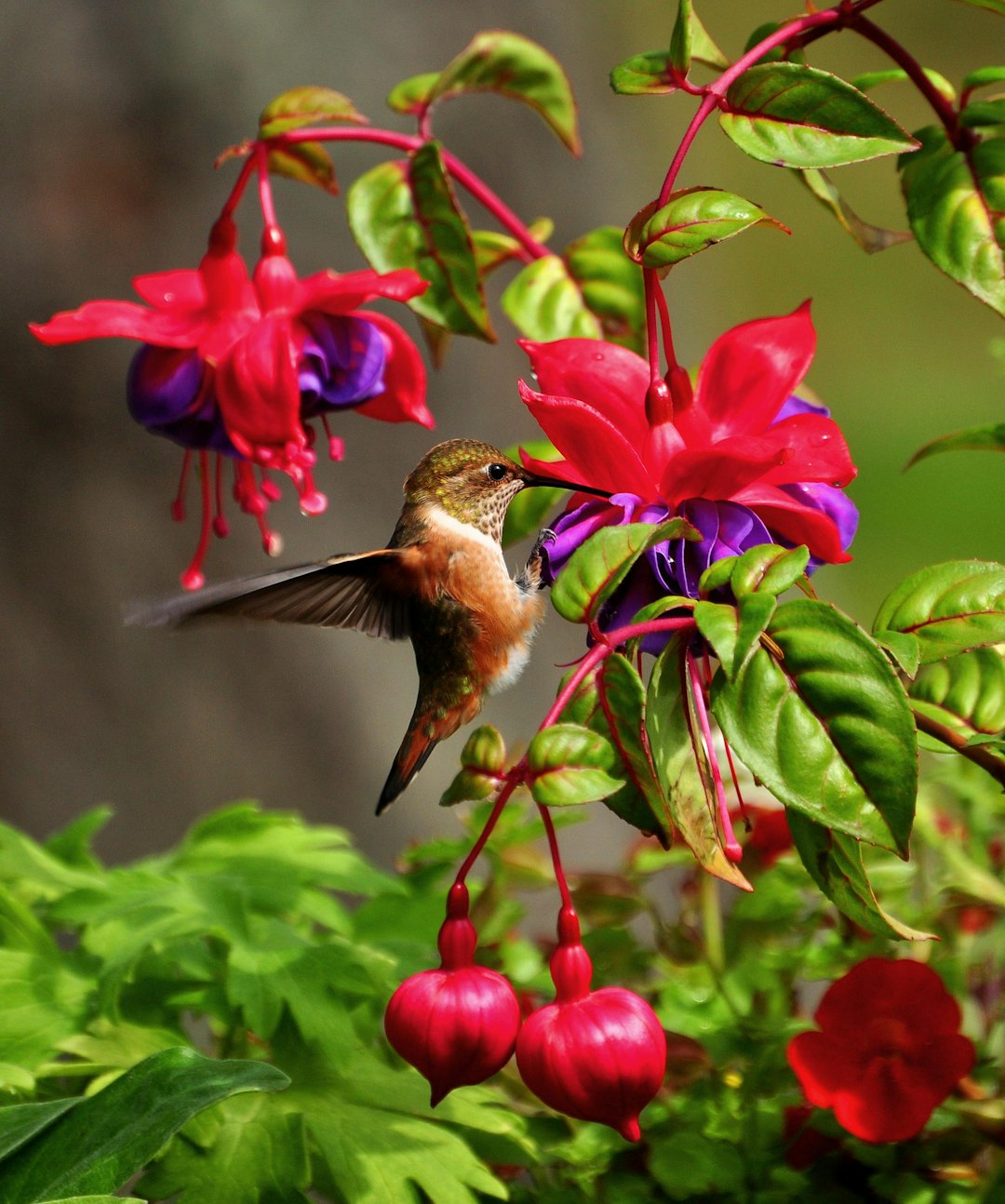Unleash the Magic of Hummingbird - Friendly Gardens

For nature lovers and gardening enthusiasts, there's nothing quite like the sight of a hummingbird flitting through the garden. These tiny, iridescent creatures bring a touch of magic and wonder to any outdoor space. If you're looking to transform your yard into a hummingbird haven, choosing the right types of flowers is crucial. In this guide, we'll explore the best flowers to attract these delightful birds and how to incorporate them into your garden design.
Understanding Hummingbird Preferences
Hummingbirds are attracted to bright - colored, tubular flowers that are rich in nectar. Their long, slender beaks are perfectly adapted to reach deep into these tubular blossoms to extract the sweet nectar. Red, orange, and pink are among their favorite colors, as these hues are highly visible to them. Additionally, they prefer flowers that are clustered together, making it easier for them to access multiple sources of nectar in one location.
Top Flowers for Attracting Hummingbirds
1. Trumpet Vine (Campsis radicans)
This vigorous, climbing vine is a favorite among hummingbirds. Its large, trumpet - shaped orange - red flowers produce an abundance of nectar. Trumpet vines can grow quite rapidly, so it's important to give them plenty of space to spread. They are also hardy in a wide range of climates, making them a versatile choice for many gardens. You can train them to grow on trellises, fences, or arbors, adding vertical interest to your garden design.
2. Bee Balm (Monarda)
Bee balm comes in a variety of colors, including red, pink, and purple. Its tubular flowers are arranged in showy, globe - shaped clusters that are irresistible to hummingbirds. Bee balm is also a magnet for bees and butterflies, adding even more life to your garden. It prefers full sun to partial shade and well - drained soil. Deadheading the spent flowers will encourage more blooms throughout the growing season.
3. Salvia
There are many different species of salvia, and most of them are excellent for attracting hummingbirds. Salvia flowers come in a wide range of colors, from bright reds and purples to soft pinks and blues. They have long, tubular blossoms that are perfect for hummingbird beaks. Salvia is drought - tolerant and thrives in full sun, making it a great choice for low - maintenance gardens. Some popular varieties include Salvia splendens and Salvia greggii.
4. Columbine (Aquilegia)
Columbine has unique, spurred flowers that come in a variety of colors, including red, yellow, and blue. These delicate flowers are a favorite of hummingbirds, especially in the spring. Columbine prefers partial shade and moist, well - drained soil. It can self - seed, so you may find new plants popping up in your garden each year. The interesting shape of the flowers also adds a touch of whimsy to your garden design.
5. Fuchsia
Fuchsia plants have pendulous, bell - shaped flowers that are typically a combination of pink, purple, and red. They are a favorite of hummingbirds, especially in areas with milder climates. Fuchsias prefer partial shade and moist, well - drained soil. They can be grown in containers, hanging baskets, or in the ground, making them a versatile addition to any garden. Regular deadheading will keep the plants blooming profusely.
Designing Your Hummingbird - Friendly Garden
When designing your garden to attract hummingbirds, consider creating different levels and layers of flowers. Plant taller flowers at the back of the bed and shorter ones in the front. This not only creates an aesthetically pleasing look but also provides a variety of perching and feeding opportunities for the hummingbirds. Grouping similar flowers together in clusters will make it easier for the birds to spot and access the nectar.
You can also add a water feature, such as a small fountain or a shallow birdbath. Hummingbirds need water for drinking and bathing, and the sound of running water can be very attractive to them. Place the water feature near the flower beds to create a complete hummingbird oasis.
Maintaining Your Hummingbird Garden
Regular maintenance is essential to keep your hummingbird garden thriving. Water your plants regularly, especially during dry spells. Fertilize them according to the specific needs of each plant species. Prune back any dead or overgrown branches to keep the plants healthy and looking their best. By providing a well - maintained, nectar - rich environment, you'll ensure that hummingbirds keep coming back to your garden year after year.
In conclusion, creating a hummingbird - friendly garden is a rewarding experience. By choosing the right flowers, designing an inviting space, and maintaining your garden properly, you can enjoy the beauty and charm of these amazing birds right in your own yard. So, roll up your sleeves, get planting, and let the magic of hummingbirds transform your garden.